Abstract
This report concerns the host's reactions to the presence of the parasite both in the course of the natural disease and during drug treatment. The various stages of Onchocerca volvulus are discussed in terms of the type of tissue reaction seen. The discussion then turns to basic hypotheses concerning the etiology of these reactions, emphasis being placed on the fact that while pathological changes are considerable in some locations there is a remarkable lack of reaction in others. Some of the mechanisms possibly involved in this apparent absence of host response are discussed, including anti-complement factors, poor antigenicity, acquisition of host antigen, immune tolerance, and blocking antibodies. In any study of the inflammatory response it is recommended that critical evaluations be made of histological material, haematological studies, the definition of the antigenic nature of O. volvulus, characterization of immunological reactivity of patients, and the definition of the migratory pathways of the parasite.
The marked host reactions seen following chemotherapy, especially those related to the interaction of the drug diethylcarbamazine with microfilariae, are discussed at some length. The etiology of these reactions is considered and recommendations are made for the experimental elucidation of the mechanisms involved. Emphasis is placed on the necessity for detailed sequential histopathological and immunopathological studies in the definition of the tissue lesions found in onchocerciasis. Characterization of these lesions will assist greatly the approach to control of the adverse reactions seen during treatment.
The use of anti-inflammatory agents in clinical trials is discussed and comments are made concerning the most suitable clinical situations for testing drugs and the types of drug that should be tested.
Full text
PDF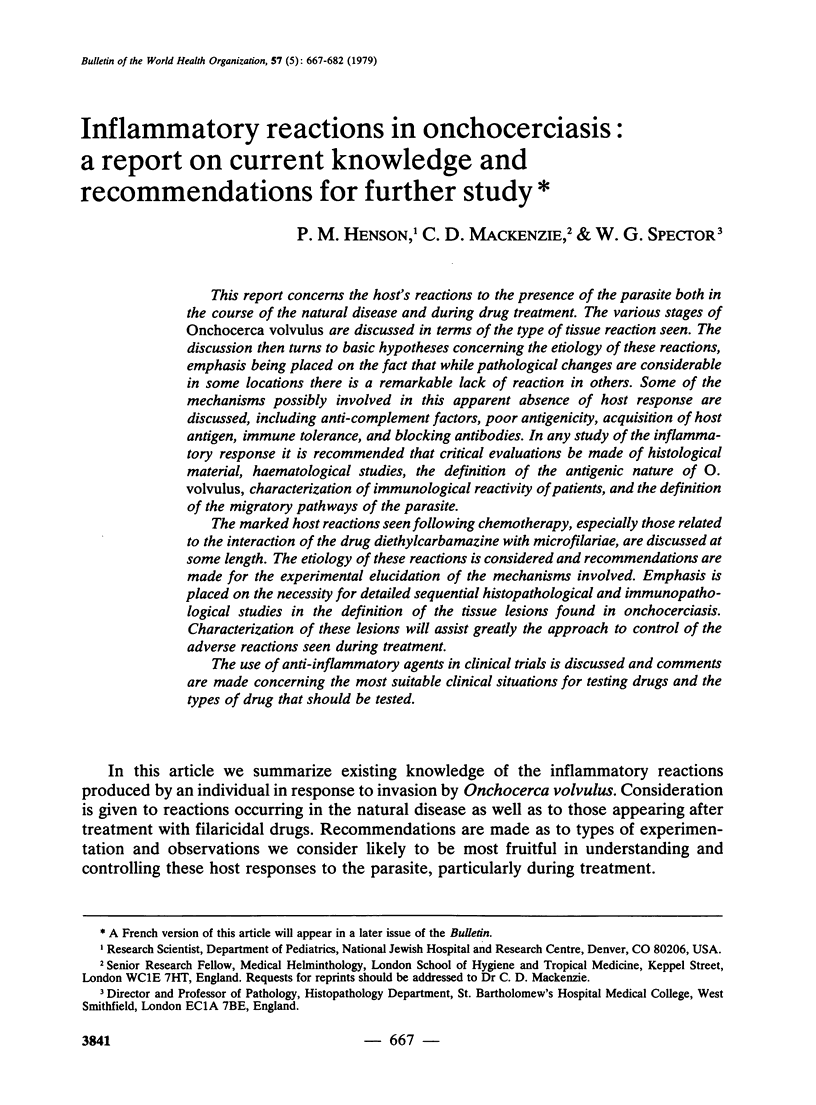
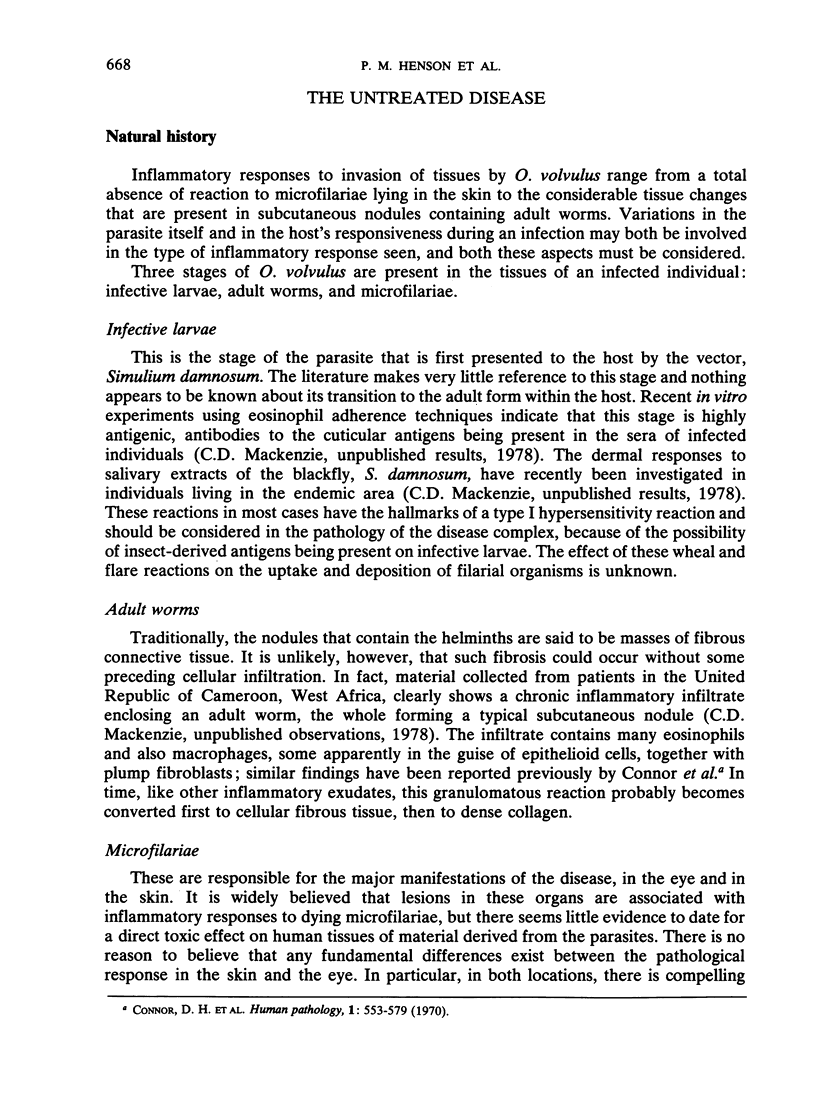
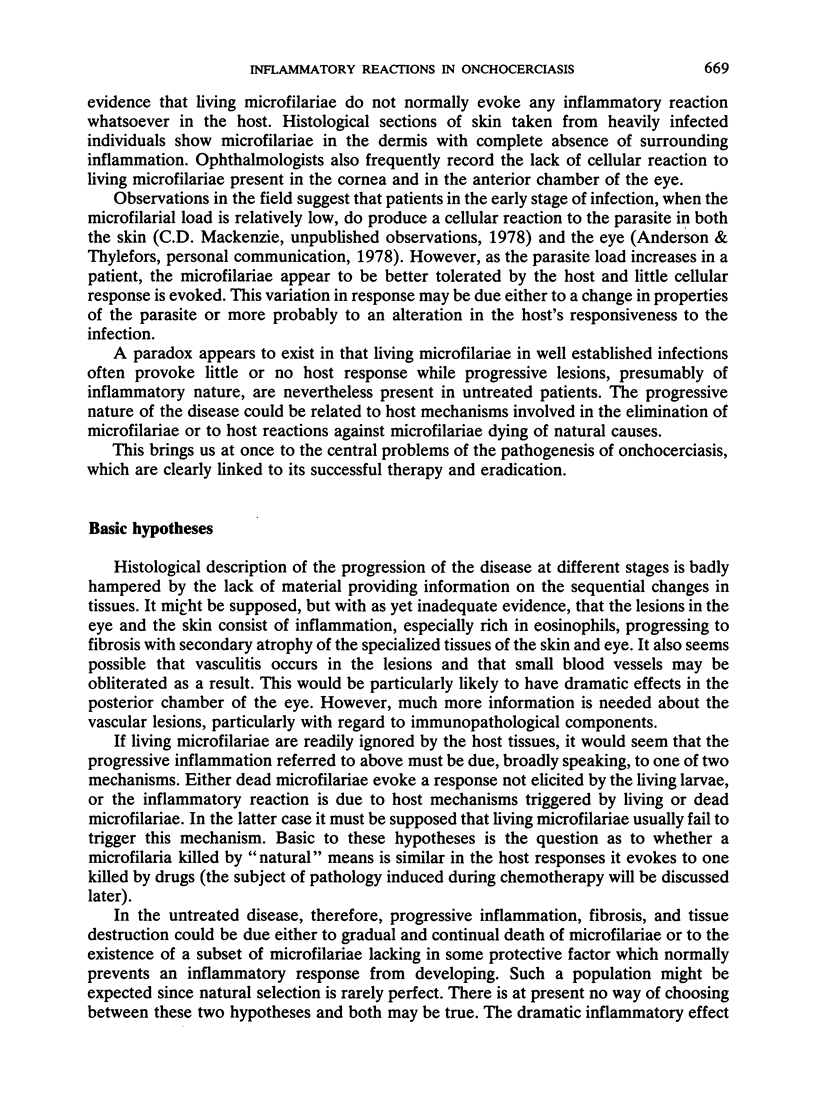
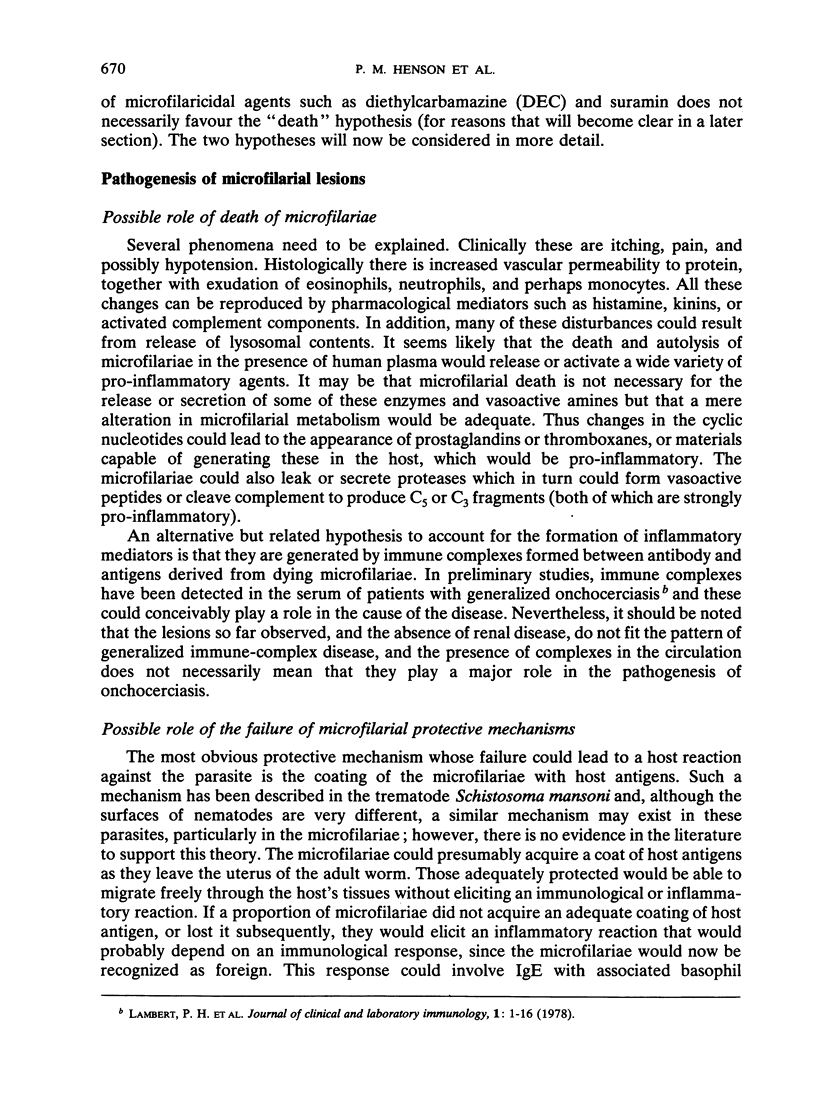
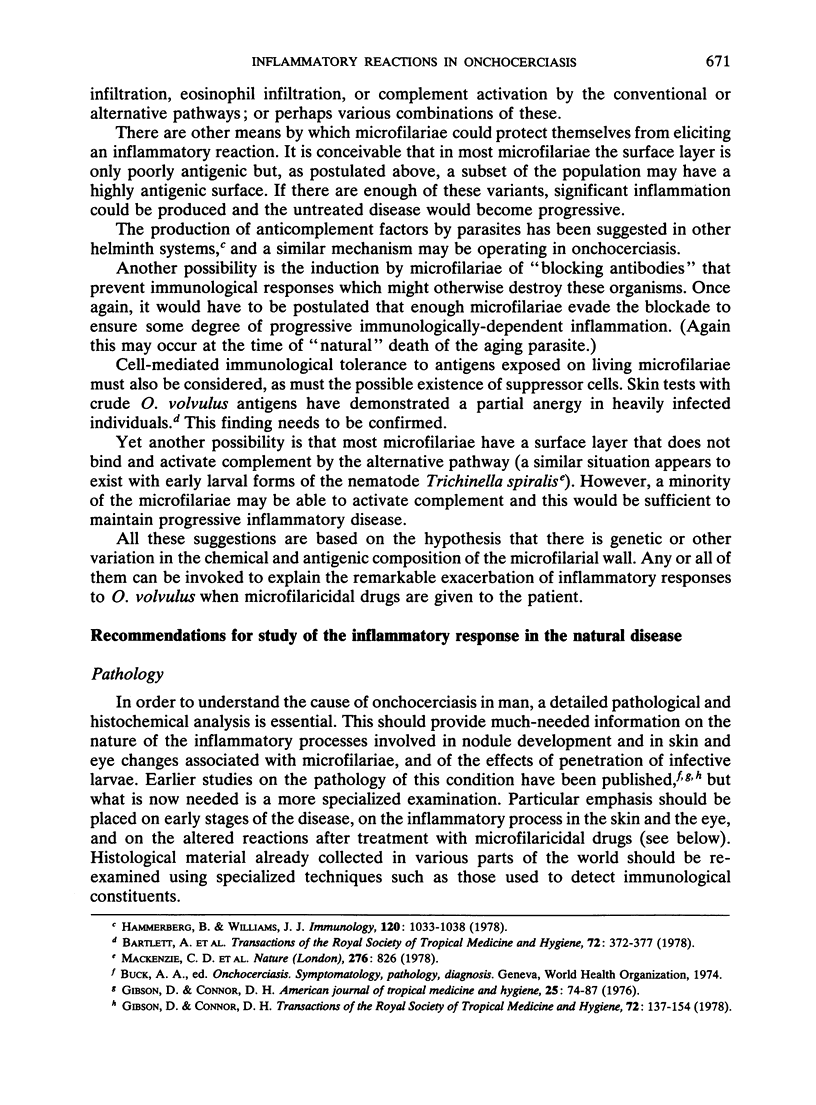
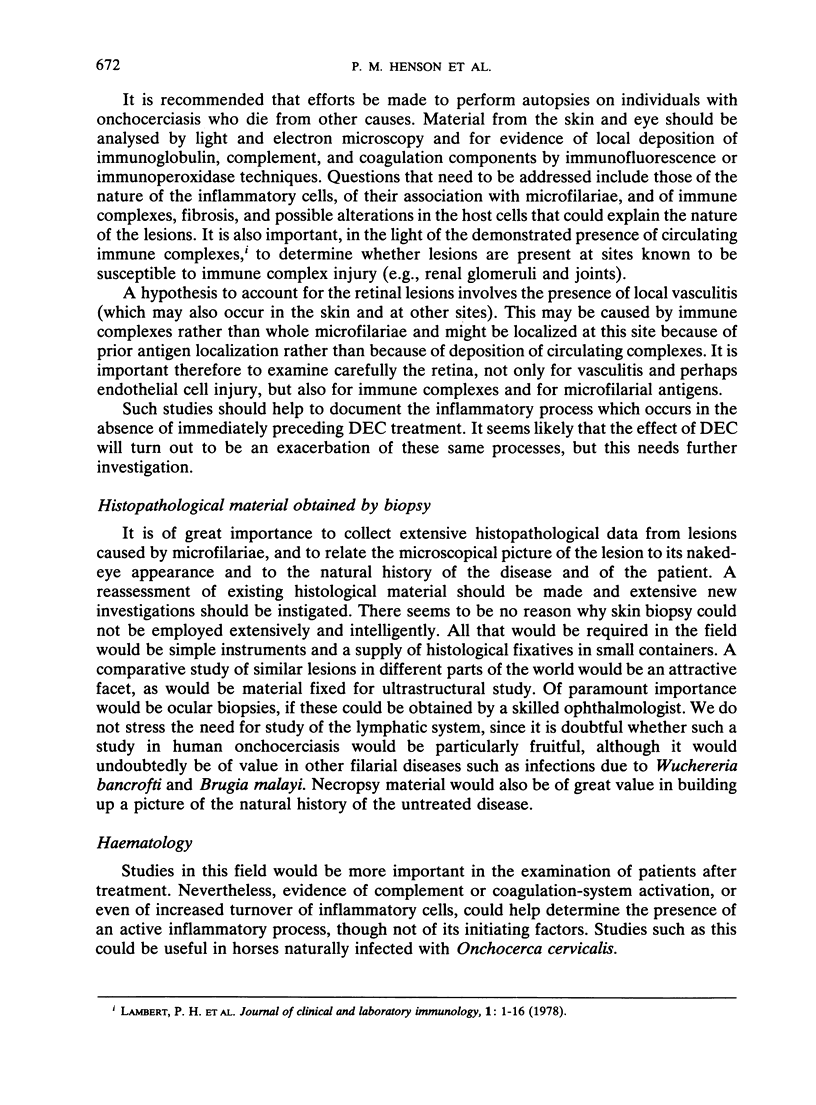
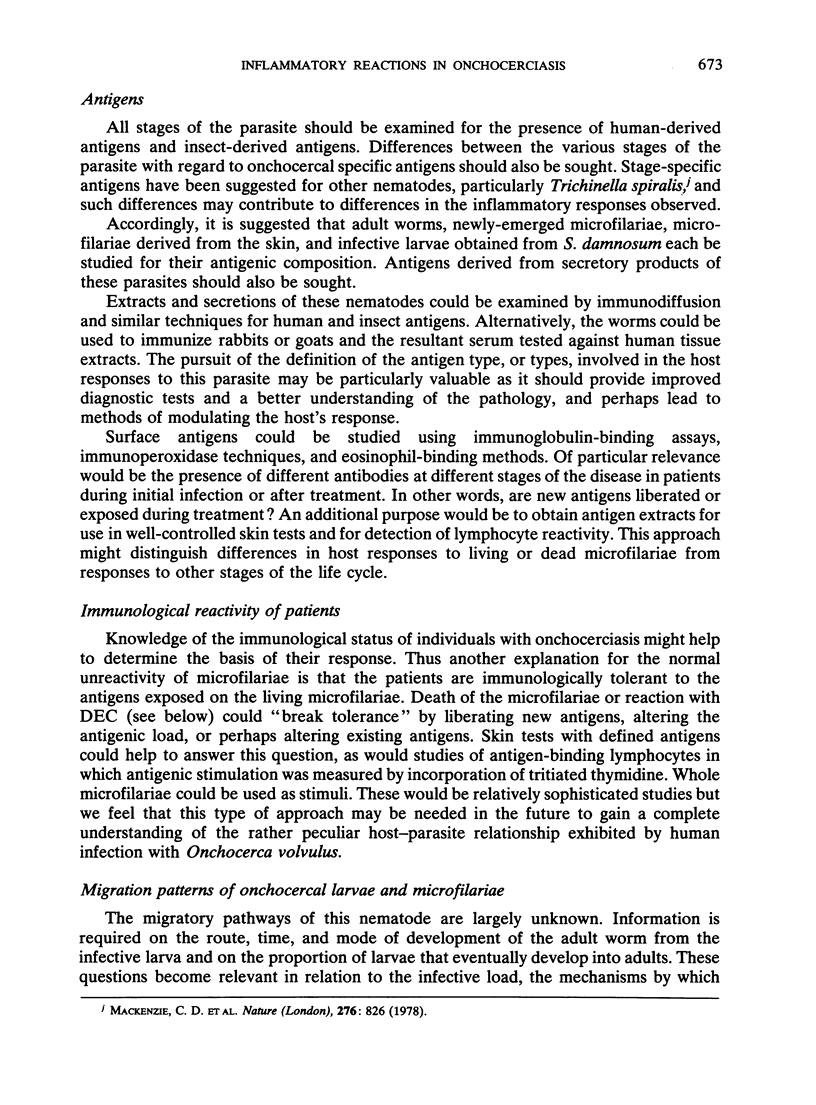
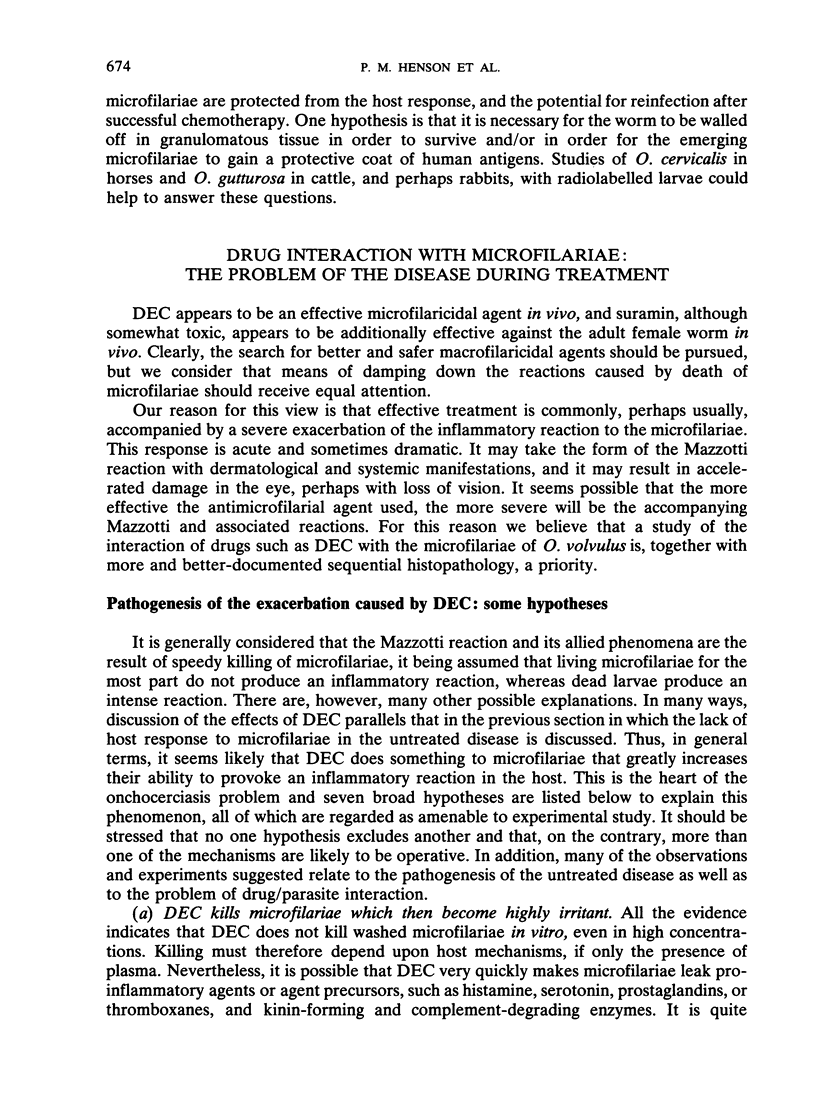
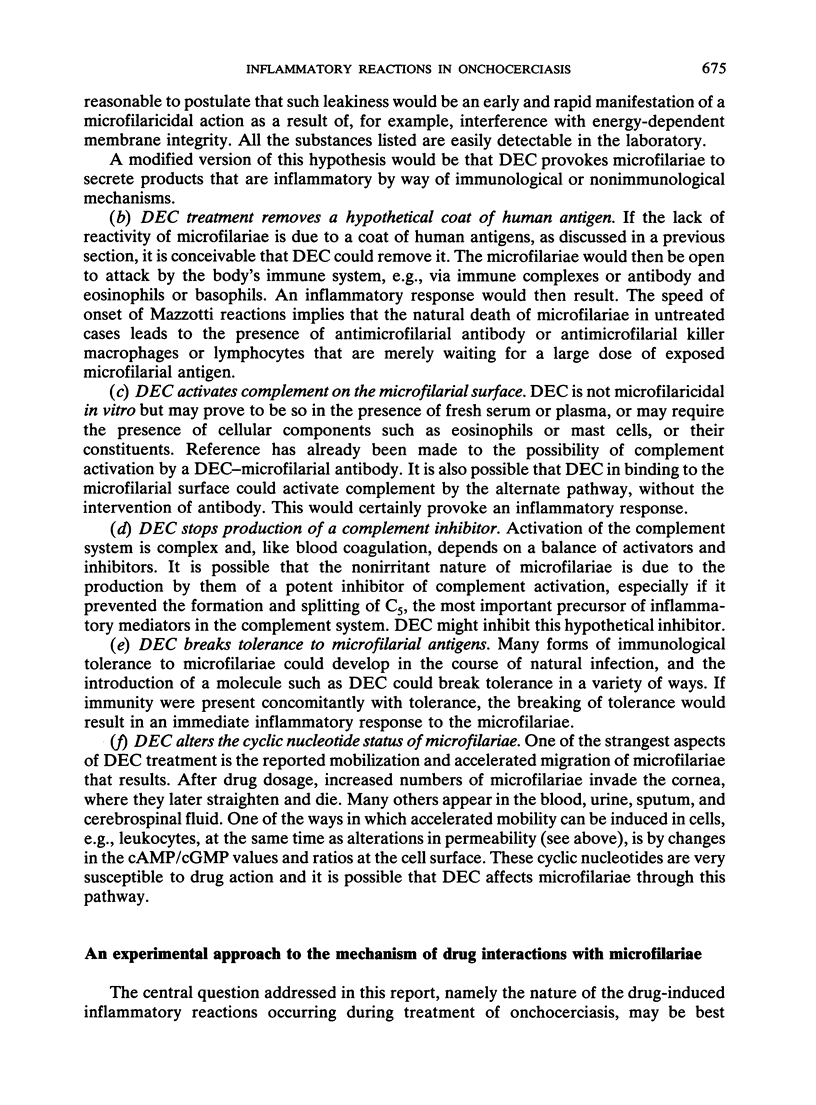
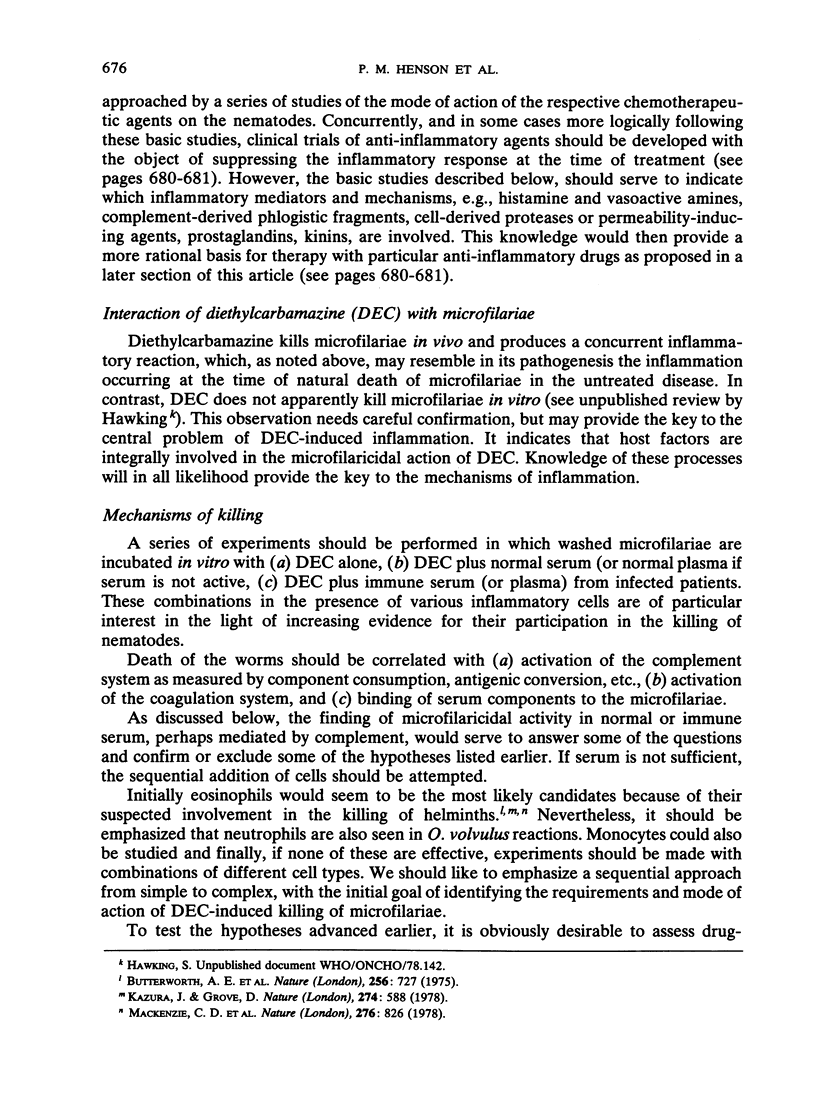
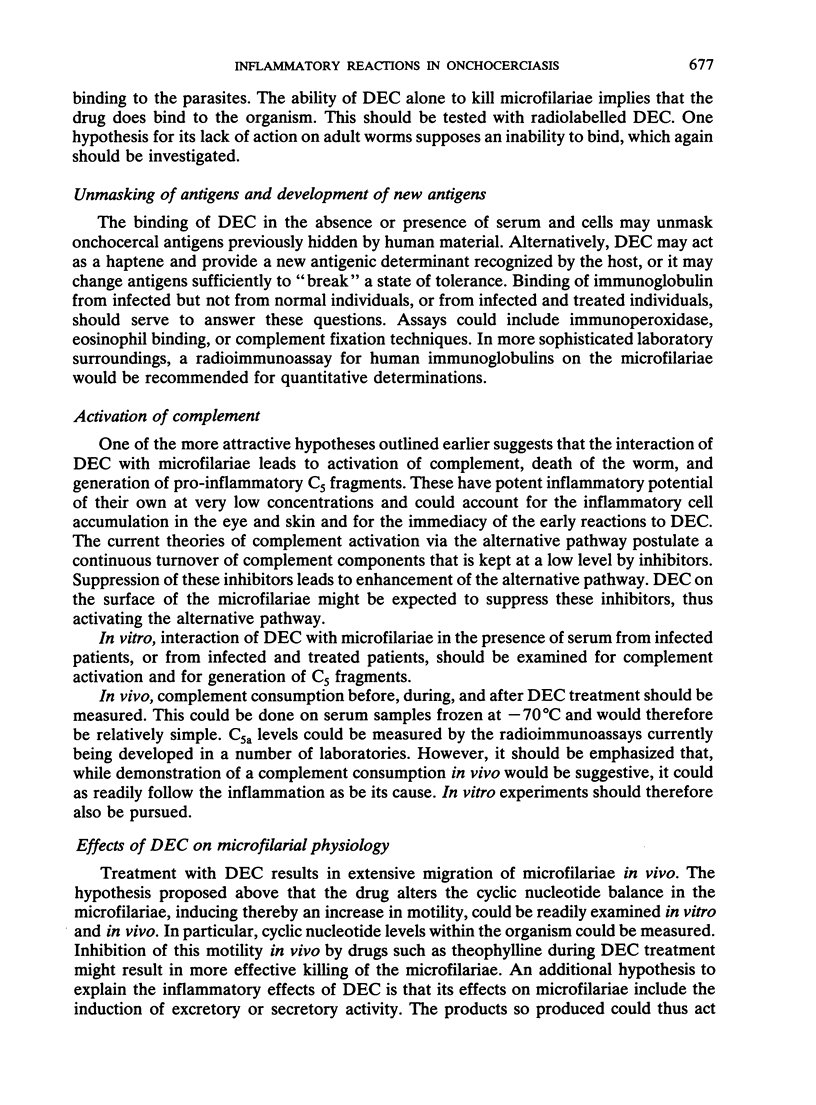
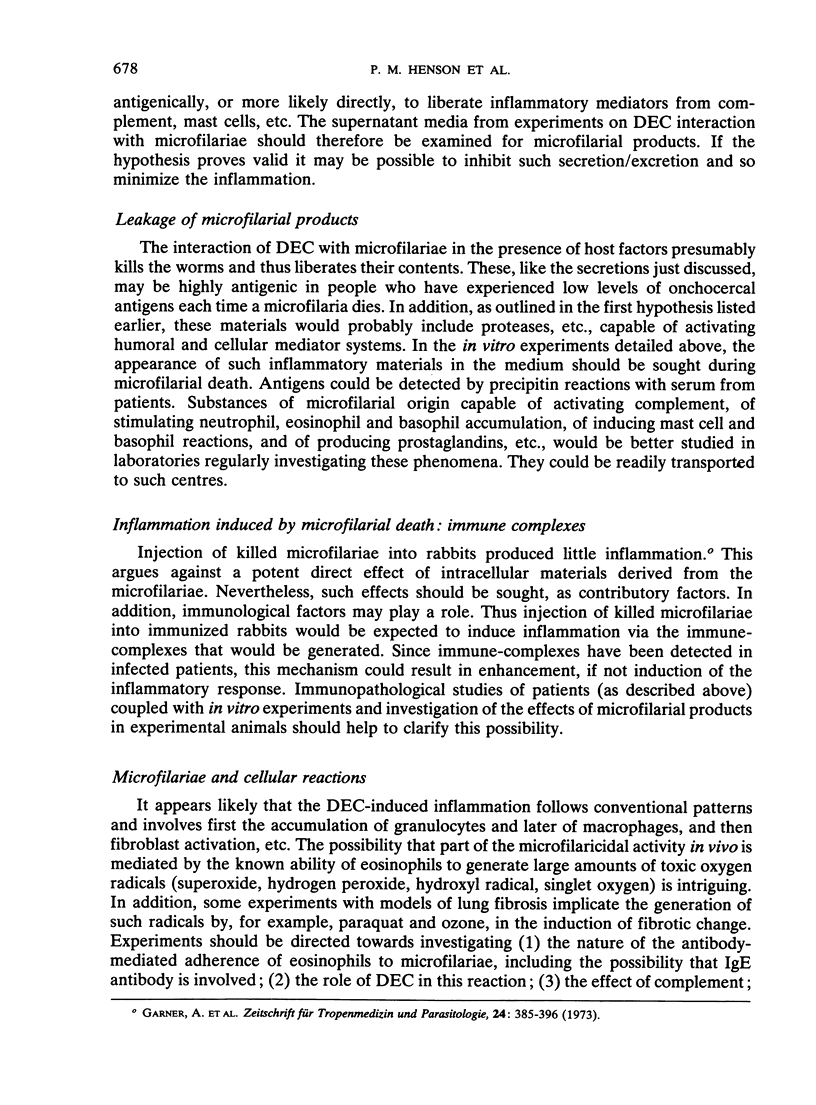
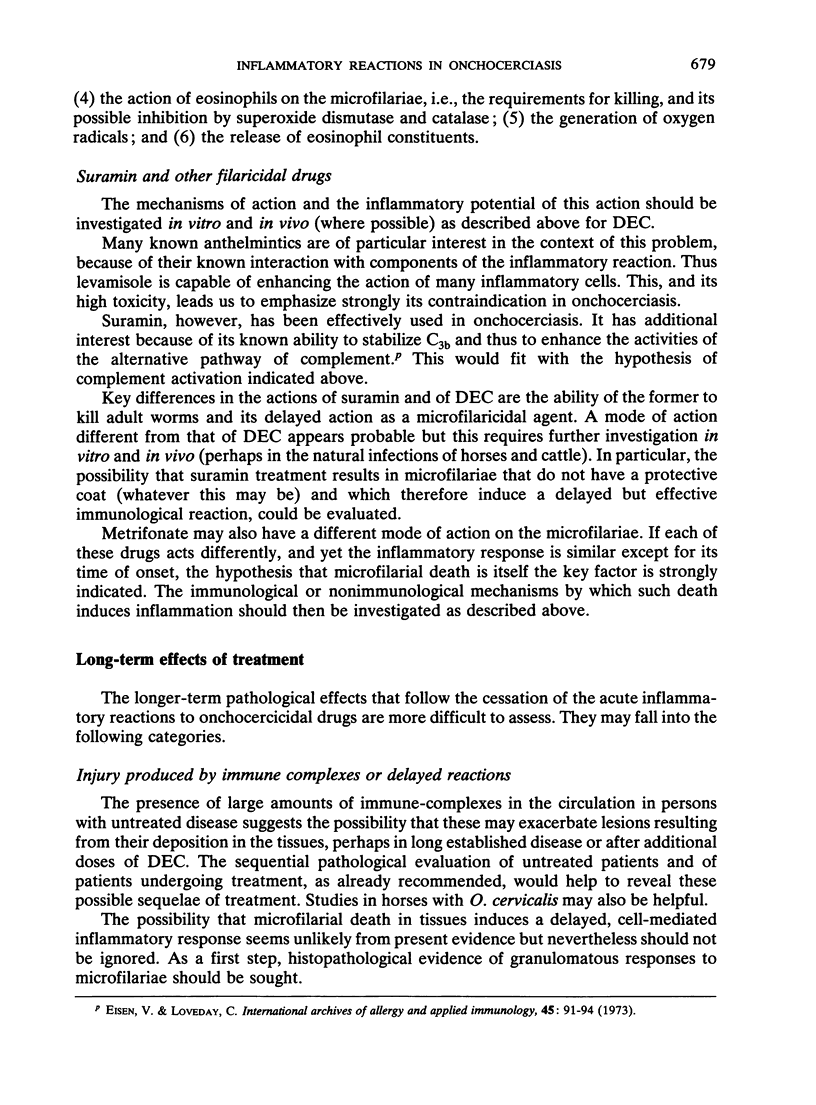
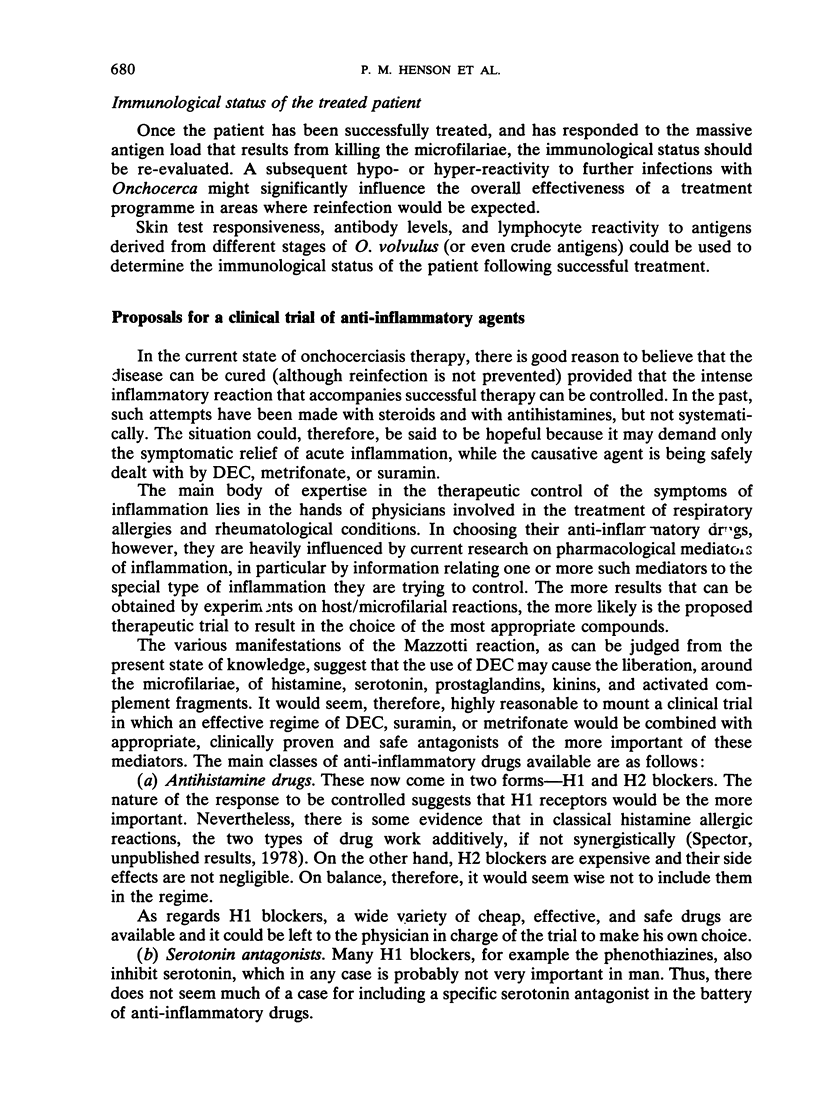
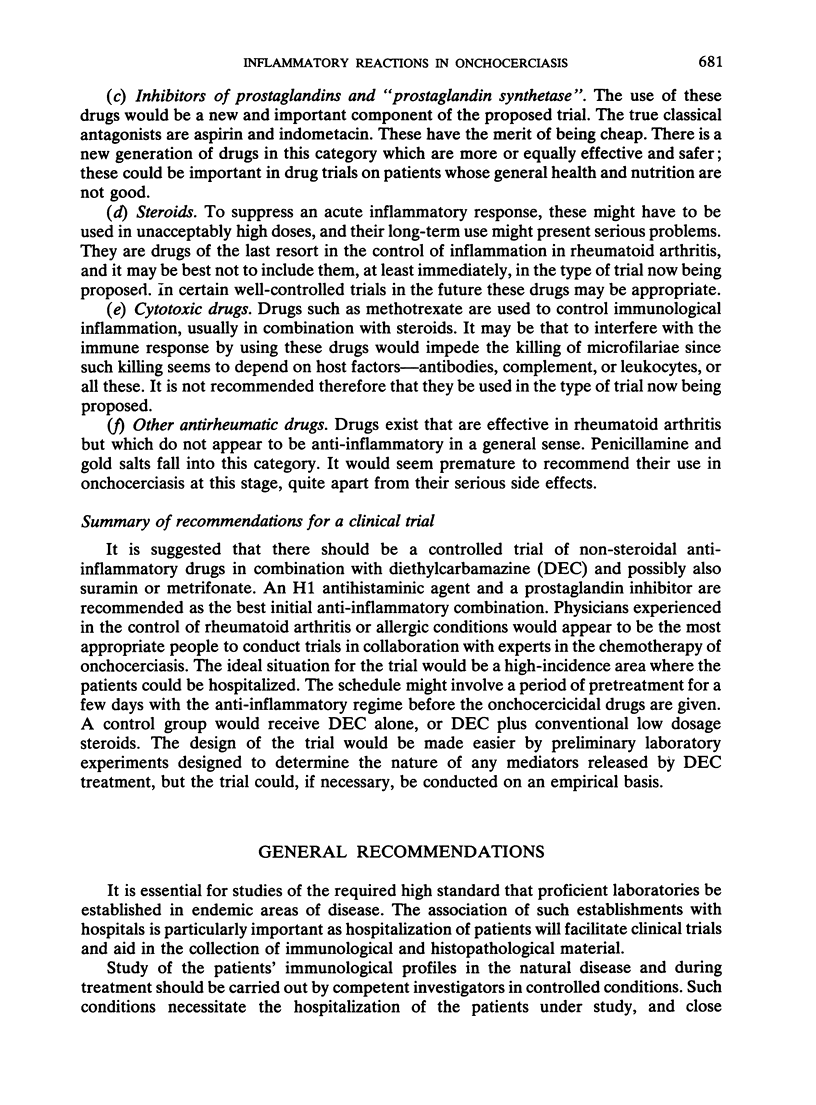
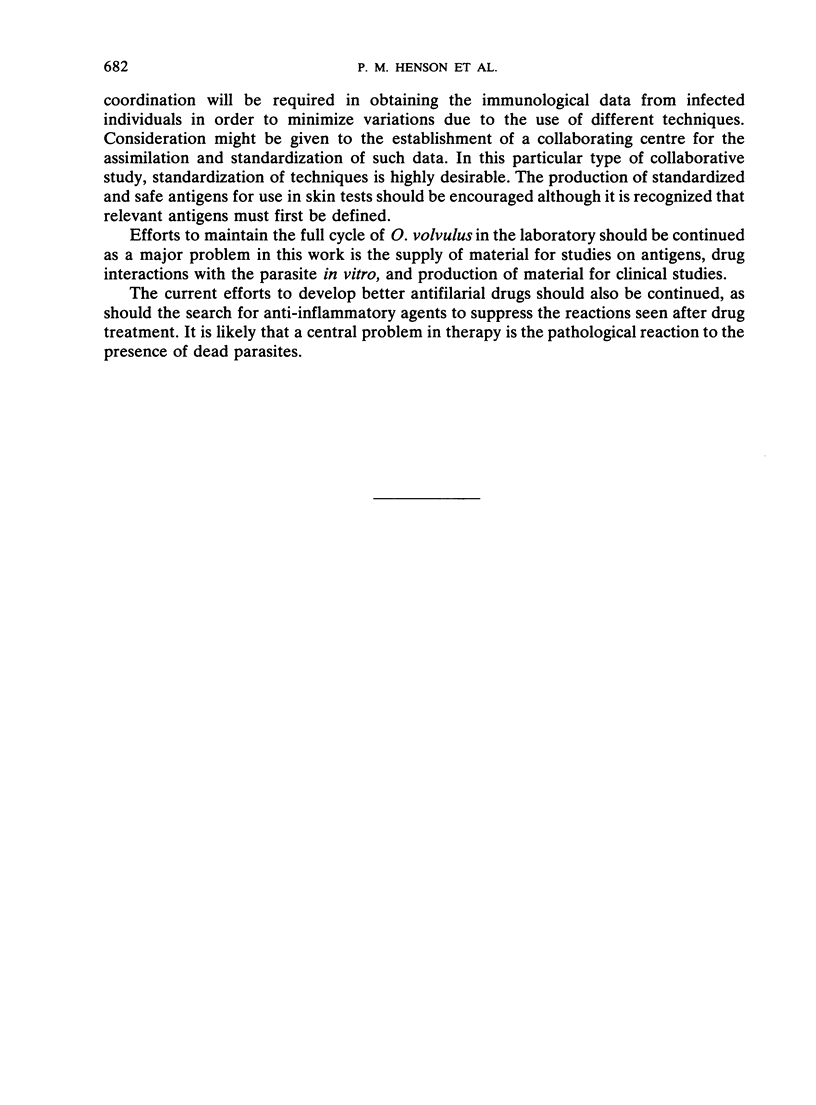
Selected References
These references are in PubMed. This may not be the complete list of references from this article.
- Eisen V., Loveday C. Intrinsic activation of plasma kinin formation and complement. Int Arch Allergy Appl Immunol. 1973;45(1):91–94. doi: 10.1159/000231009. [DOI] [PubMed] [Google Scholar]
- Hammerberg B., Williams J. F. Interaction between Taenia taeniaeformis and the complement system. J Immunol. 1978 Mar;120(3):1033–1038. [PubMed] [Google Scholar]
- Kazura J. W., Grove D. I. Stage-specific antibody-dependent eosinophil-mediated destruction of Trichinella spiralis. Nature. 1978 Aug 10;274(5671):588–589. doi: 10.1038/274588a0. [DOI] [PubMed] [Google Scholar]
- Mackenzie C. D., Preston P. M., Ogilvie B. M. Immunological properties of the surface of parasitic nematodes. Nature. 1978 Dec 21;276(5690):826–828. doi: 10.1038/276826a0. [DOI] [PubMed] [Google Scholar]
- Mackenzie C. D., Preston P. M., Ogilvie B. M. Immunological properties of the surface of parasitic nematodes. Nature. 1978 Dec 21;276(5690):826–828. doi: 10.1038/276826a0. [DOI] [PubMed] [Google Scholar]


